What is carbon's source?
The PolarTREC project I am assigned to, Arctic Sunlight and Microbial Interactions 2014 studies the release of carbon from arctic waters to the atmosphere in the form of carbon dioxide. The easiest way for me to explain the research is to give a step-by-step explanation.
First, consider that all living things contain carbon, and carbon accounts for about half of an organism's dry mass. That is, if all of the water were removed from us, or plants or animals, half of what remains is carbon.
When the living things die, some of the carbon returns to the soil. The Arctic is considered a carbon sink because of the large amount of carbon stored in the tundra.
TundraA treeless area between the icecap and the tree line of arctic regions, having a permanently frozen subsoil and supporting low-growing vegetation such as lichens, mosses, and stunted shrubs. Soil
TundraA treeless area between the icecap and the tree line of arctic regions, having a permanently frozen subsoil and supporting low-growing vegetation such as lichens, mosses, and stunted shrubs. has two basic layers. A shallow active layer is at the top of the soil. The soil is considered active because this is the ground that thaws in spring and summer. Plants sink roots into the active layer, micro-organisms thrive, and animals find a place to burrow. The active layer may be only ten centimeters deep, so plants, animals, and microbes have limited space to live.
PermafrostPermanently frozen ground. lies beneath the active layer. PermafrostPermanently frozen ground. is ground that remains frozen for at least one year. Much of the Arctic's permafrost has been frozen for thousands of layers. Increasing temperatures in the Arctic result in a thawing of the permafrost, exposing more soil and organic matter to the watershed and atmosphere.
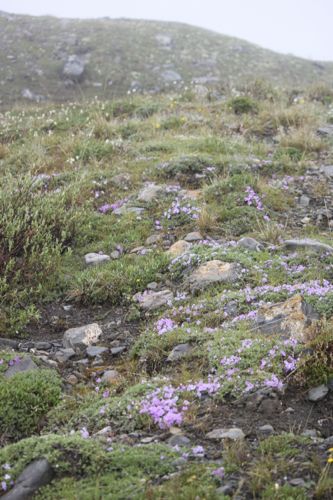
Arctic Watershed
As winter snows melts, water is absorbed by the active soil layer. However, the amount of water exceeds what the soil can absorb. The tundra is a wet, boggy area with many puddles, ponds, lakes, streams, and rivers. Several watersheds flow along Alaska's North Slope, or the region between the Brooks Range and the Arctic Ocean.
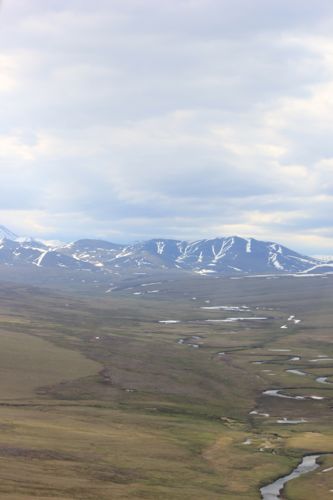
As this water travels through and across the tundra, materials, including carbon, are both carried along and deposited. Scientists collect water samples at various points in the watershed, creating a profile of the water at specific locations. Measurements taken include water and air temperature, water pH, conductivity, levels of microbes and minerals, and levels oxygen, soil carbon, and carbon dioxide dissolved in the water. Data has been collected at some sites for decades allowing good comparisons to be made.
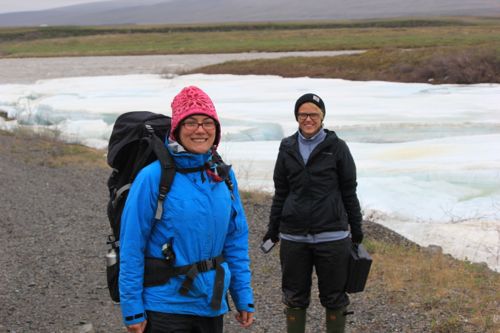
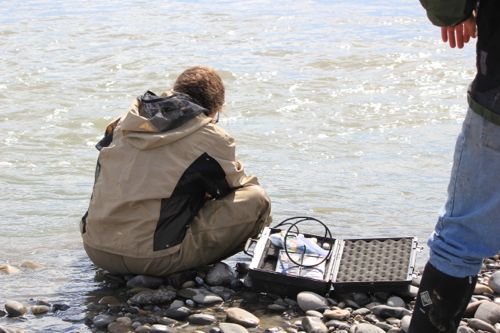
As stored carbon molecules move through the soil and water, their chemistry changes, resulting in conversion of the soil carbon to carbon dioxide (CO2) that is released in to the atmosphere. Some of this CO2 can be re-absorbed by oceans, and some stays trapped in the atmosphere. This CO2 in the atmosphere adds to the rising levels of CO2 and heat in the atmosphere, resulting in increased global temperatures.
Scientists are working to better understand what drives this carbon dioxide release from arctic waters. The researchers I am working with, Professors Rose Cory and George Kling, both from the University of Michigan, study the impact that sunlight has on release of CO2.

Sunlight Increases CO2 Release
Sunlight has been found to play a major role in the conversion of carbon to carbon dioxide. Think about how the color of an item fades after it is left in the sun for an extended time. Sunlight breaks chemical bonds and changes the pigment molecules.
A similar thing happens to soil carbon dissolved in the waters of arctic streams and lakes. Sunlight's ultra-violet rays break molecular bonds of the soil carbon, resulting in the conversion of soil carbon to CO2. Dr. Cory's team is measuring the wavelengths of light that move through water column in the Arctic to understand how much of the soil carbon dissolved in water can be converted to CO2 by sunlight.
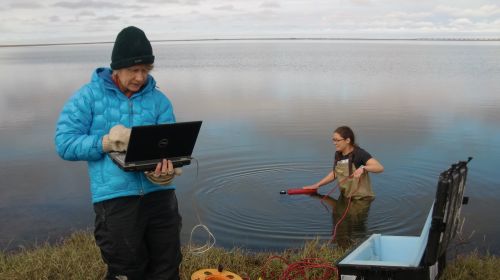
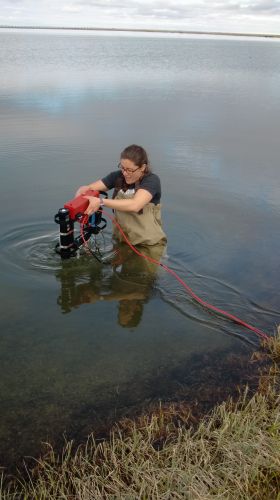
Water systems here are shallow and clear. The Arctic sun does not set for months at a time, so lots of sunlight interacts with the Arctic watershed. Combine the arctic sun, thawing permafrost, and an increasing release of carbon from soil, and the potential rise in atmospheric CO2 is high.


Comments